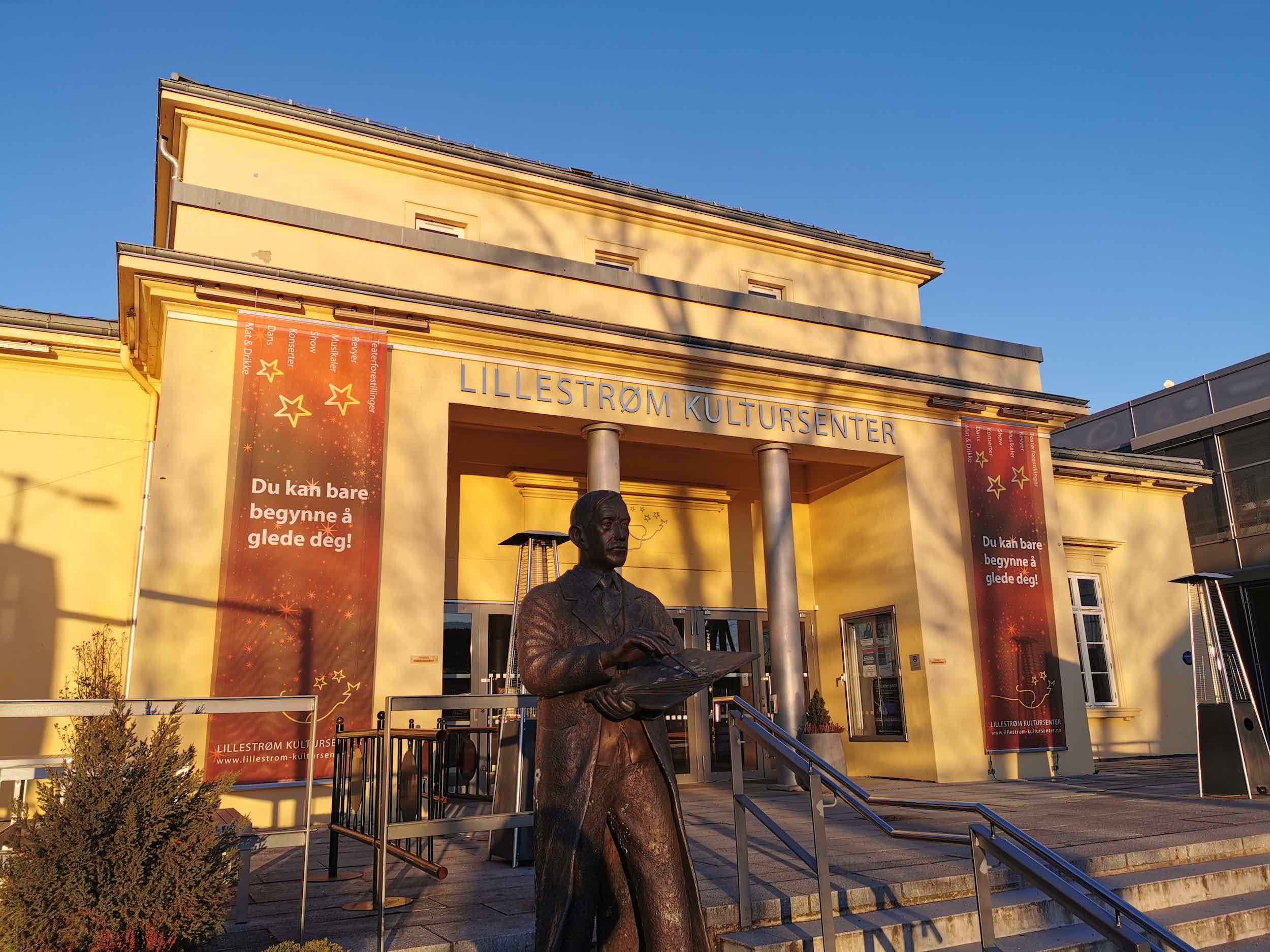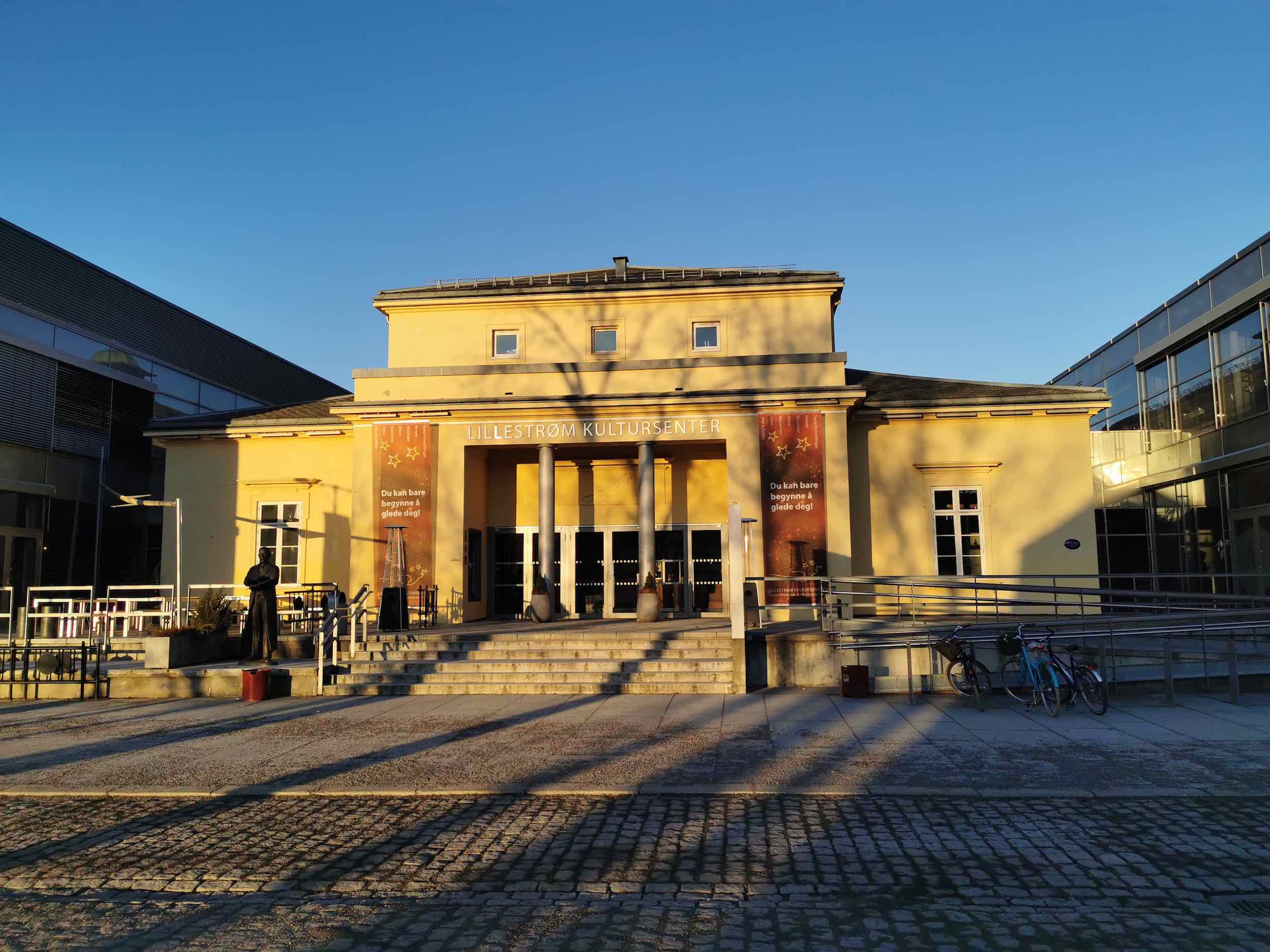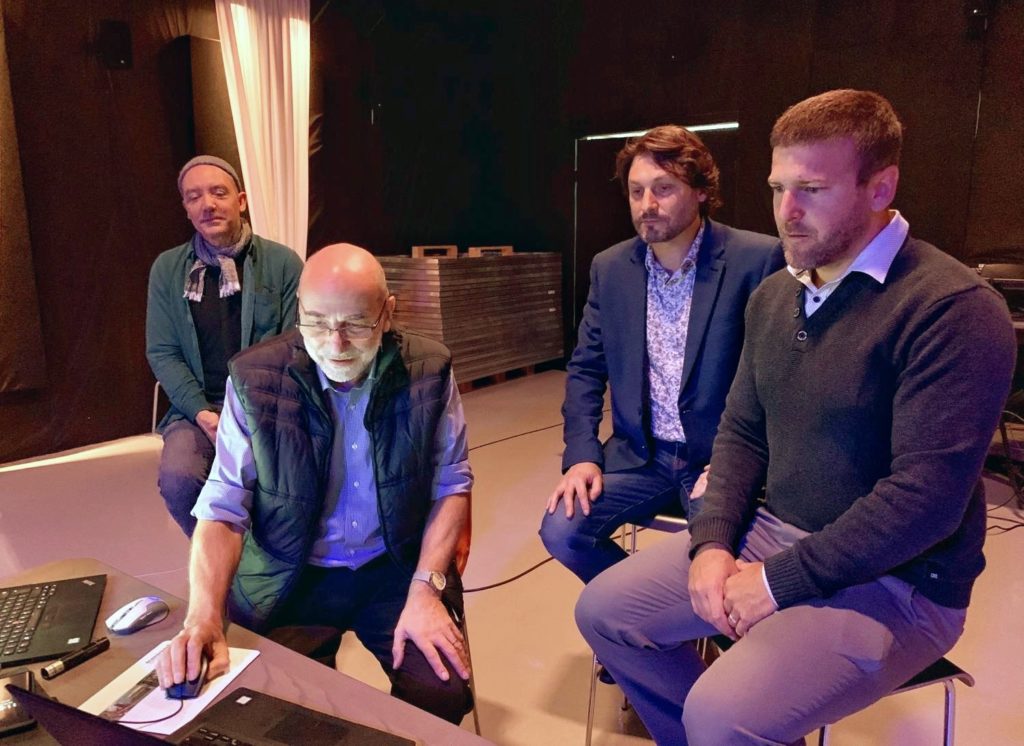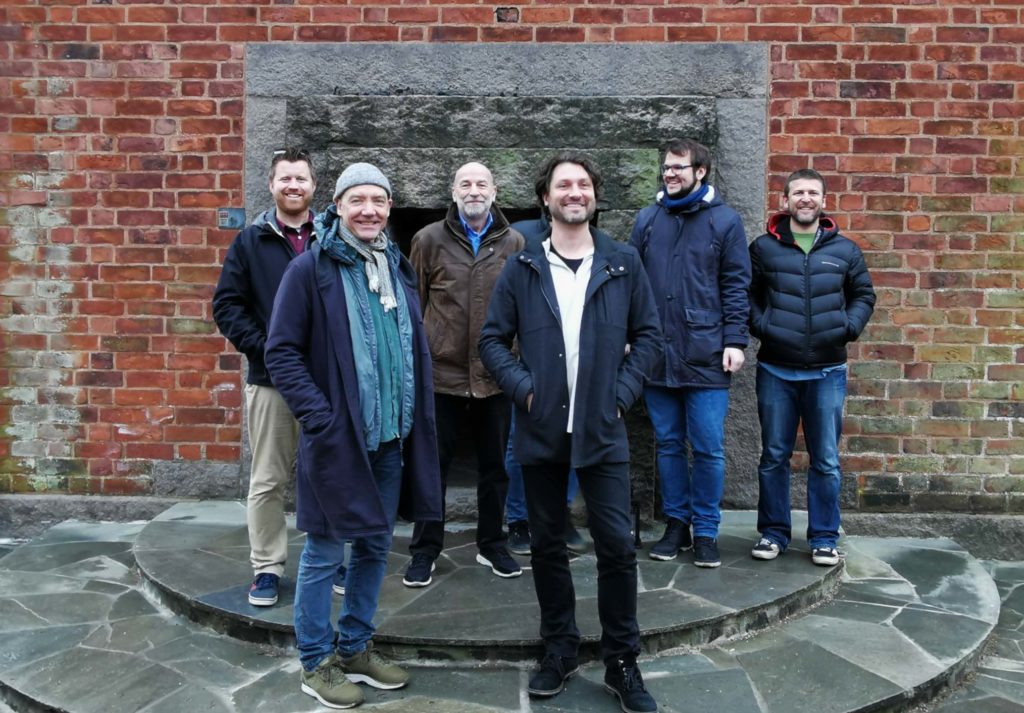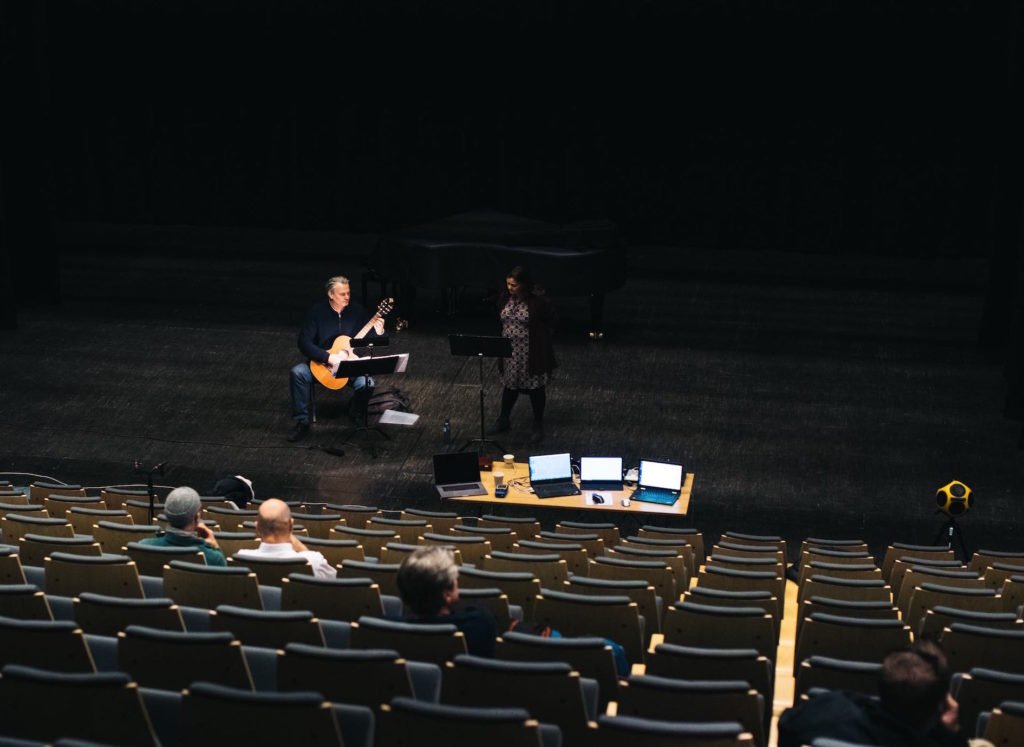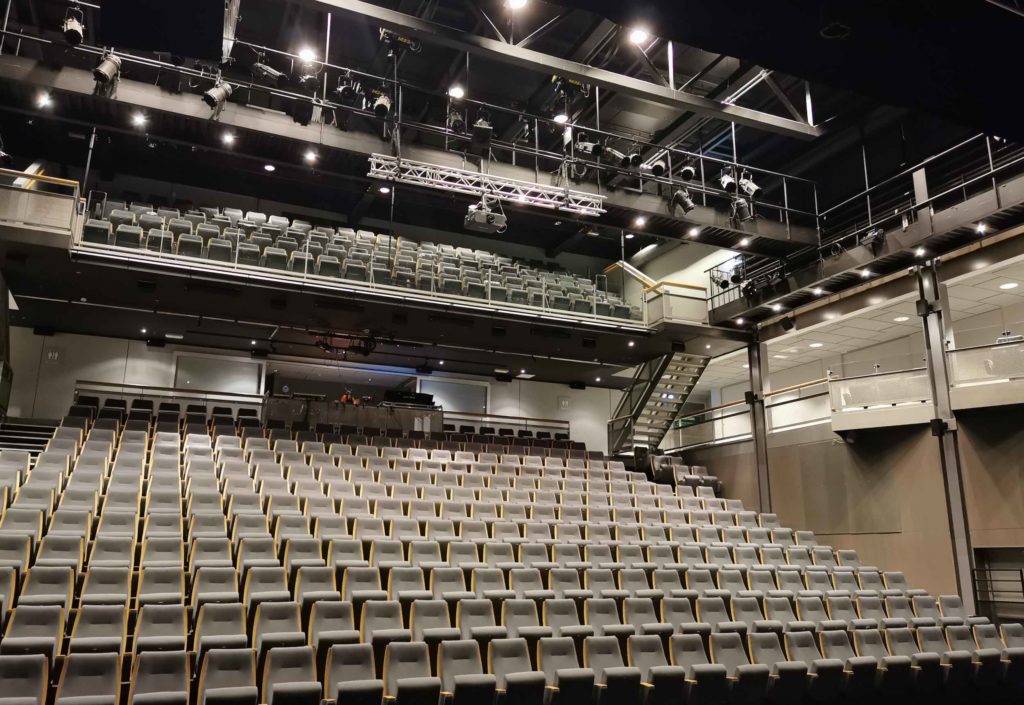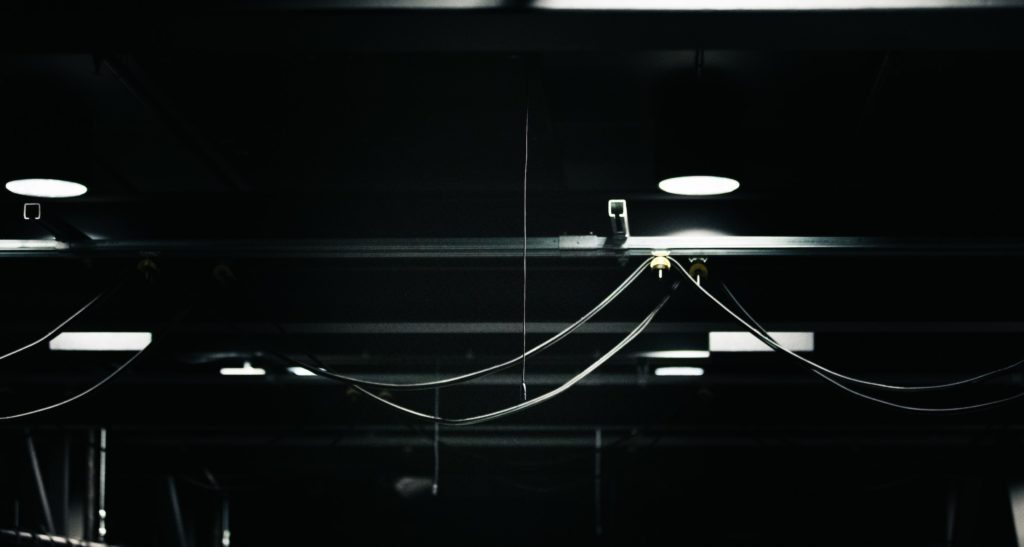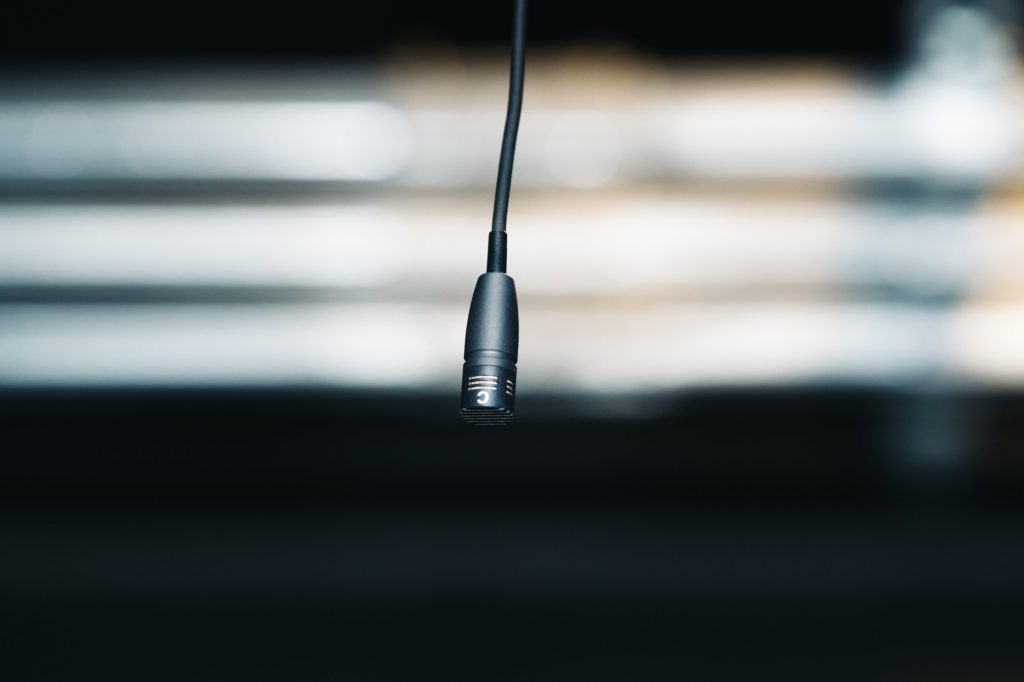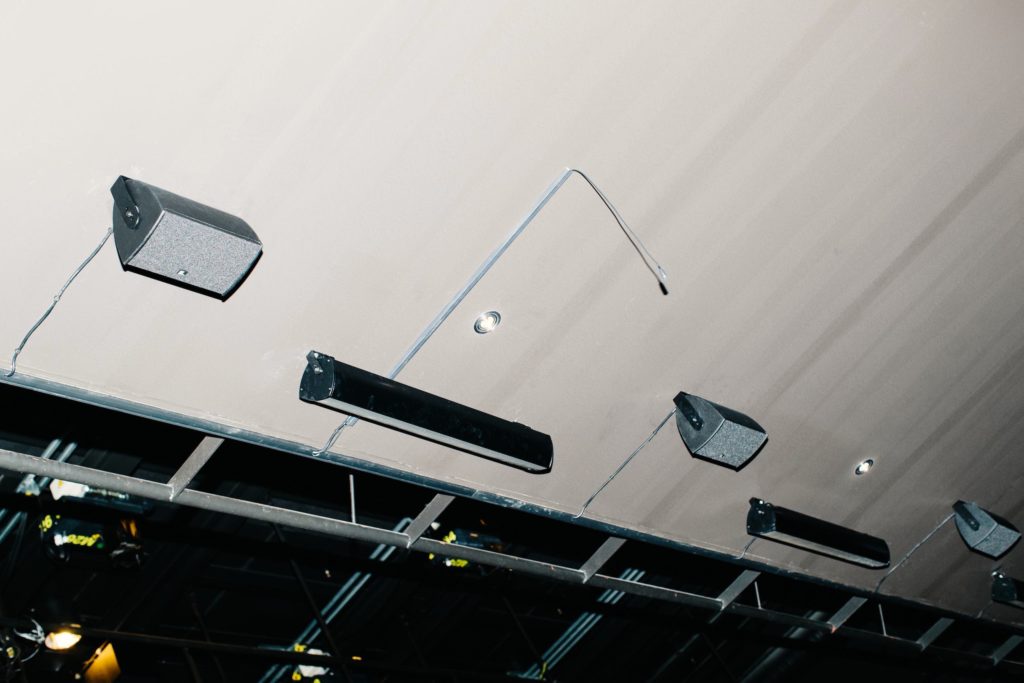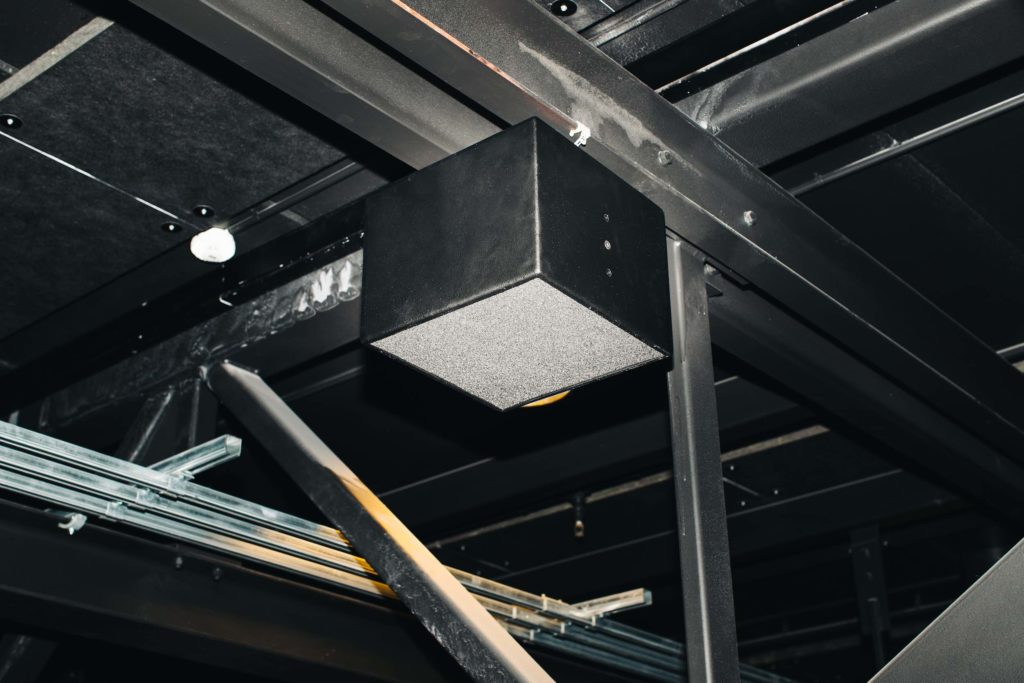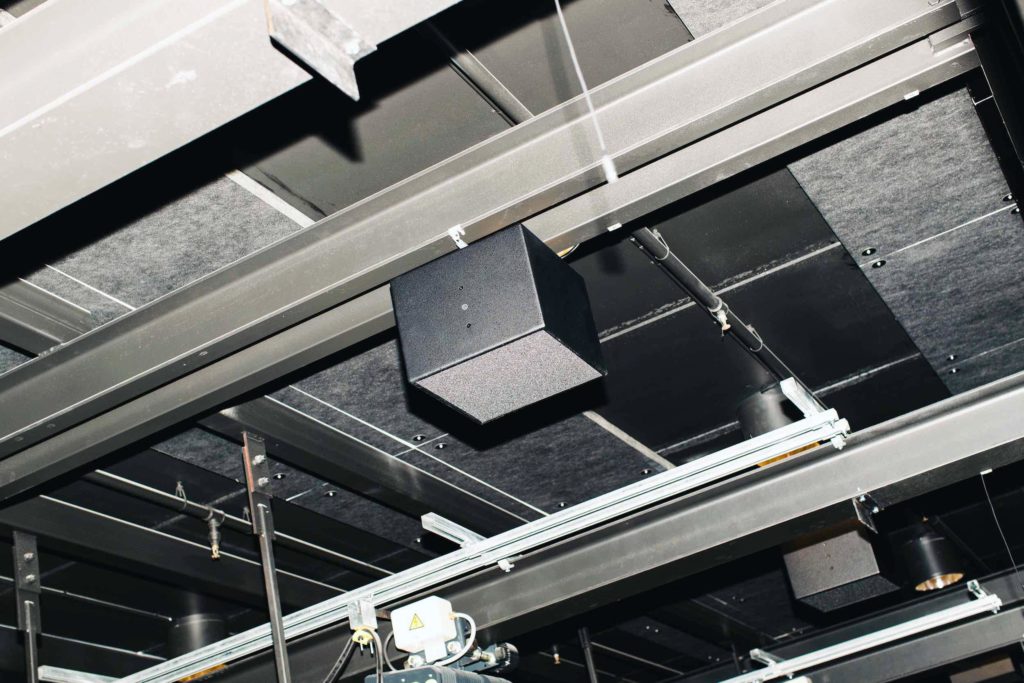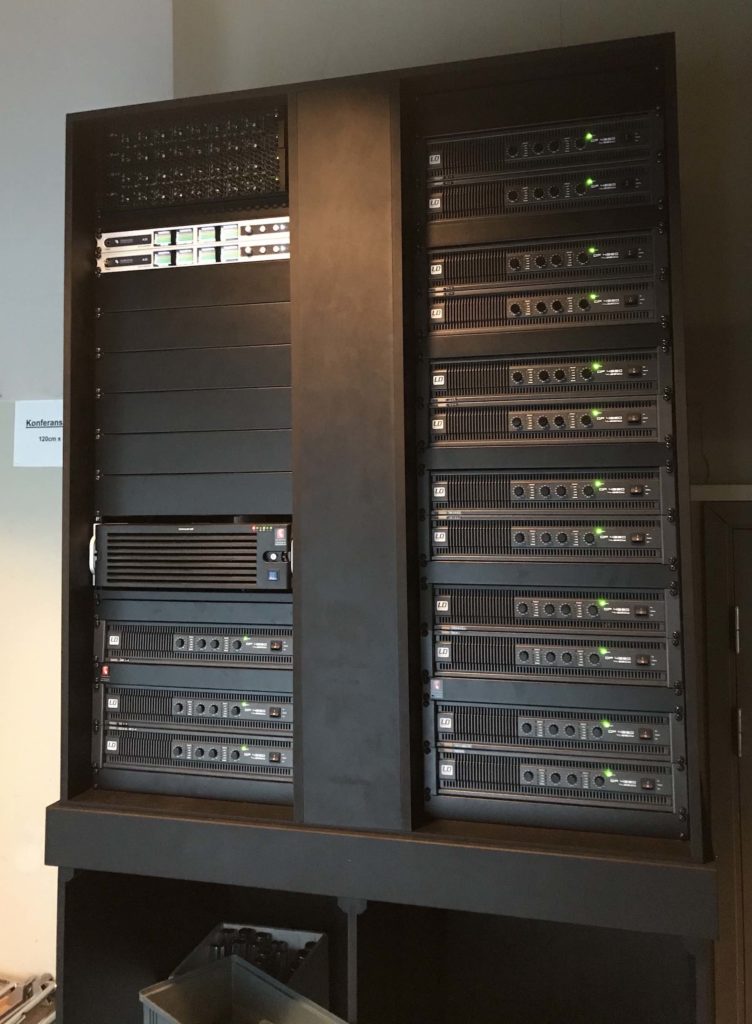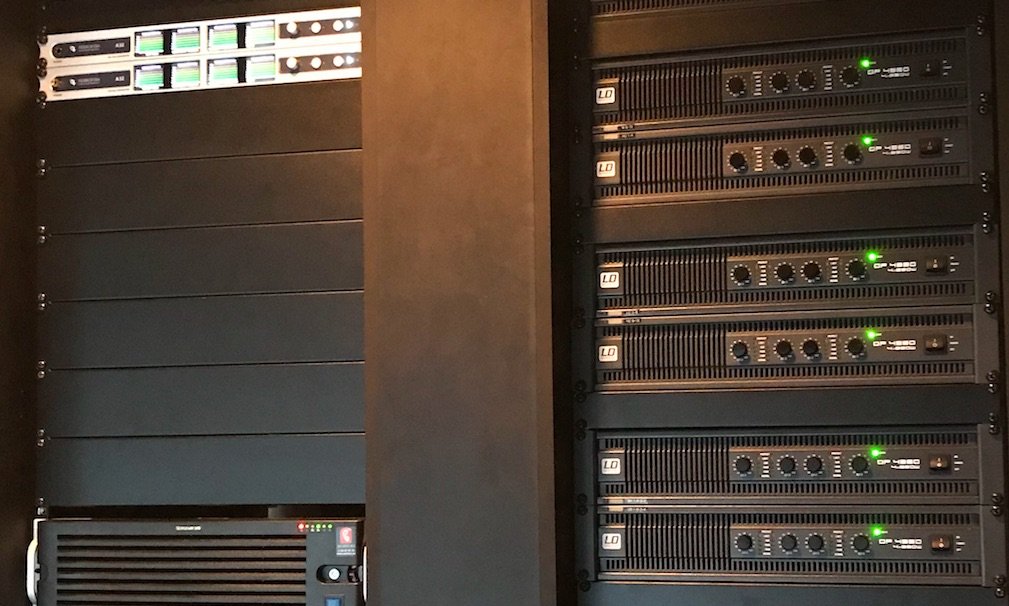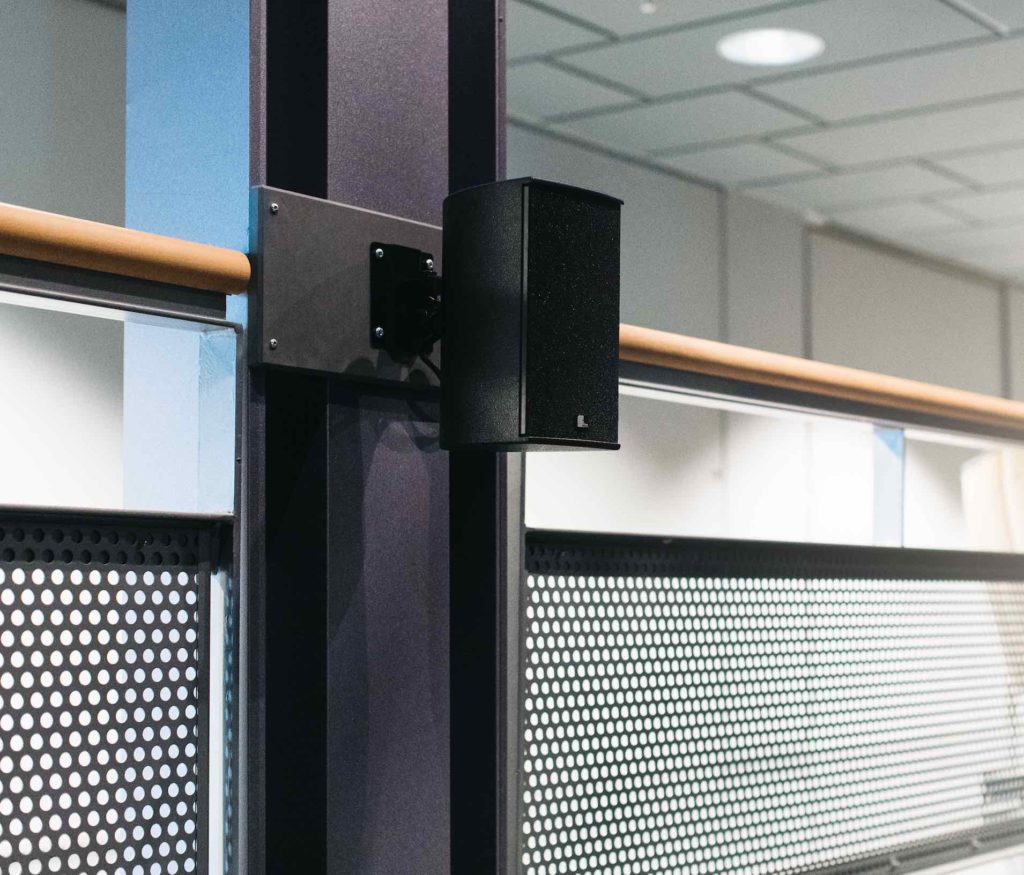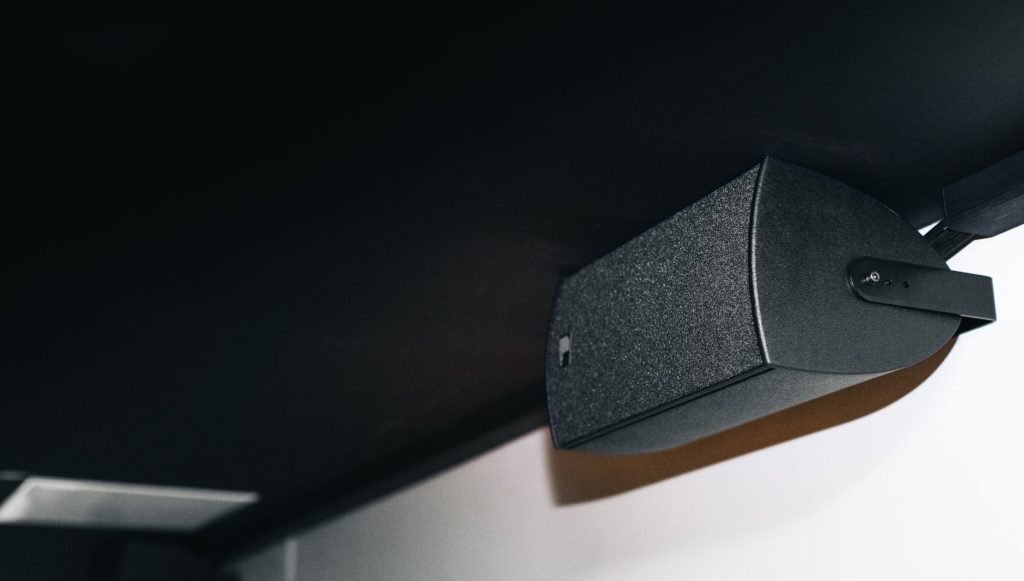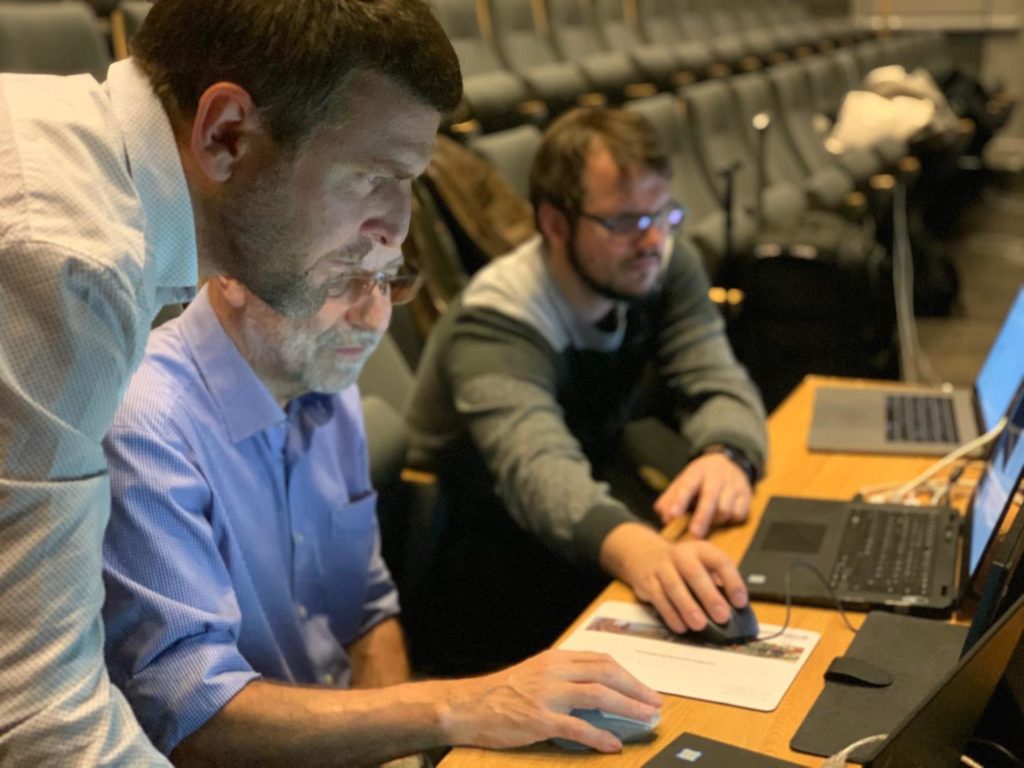Integration
16 Nov 2020
Hands on in Oslo with Müller-BBM’s Vivace electronic room acoustics system
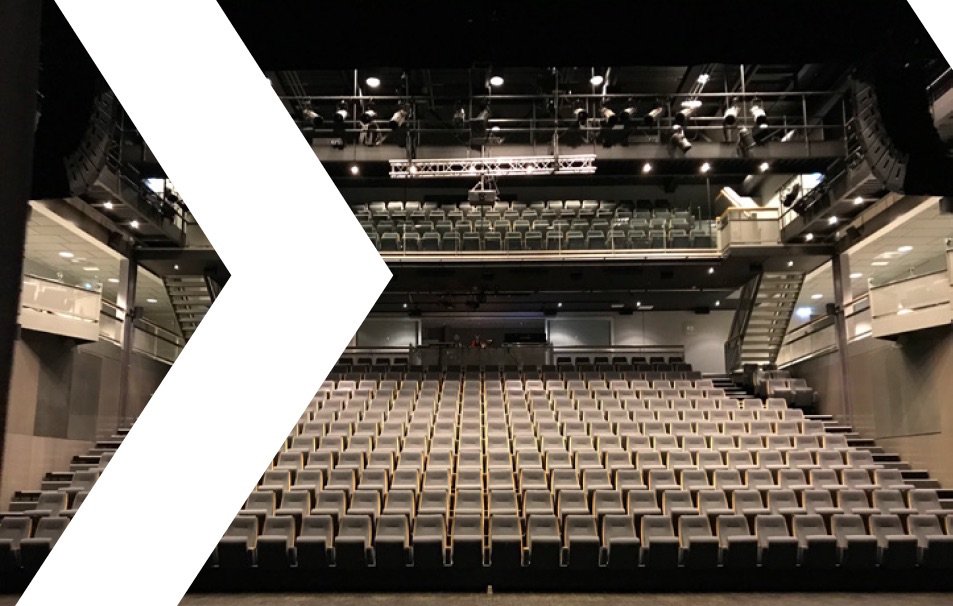
Subscribe to CX E-News
The Lillestrom Cultural Centre in Oslo, Norway, is just four years shy of its 100th birthday. Its Theatre Hall seats 600, and like most small performing arts venues, there’s huge variety in the styles of acts it hosts, from classical music to stand-up comedy.
It’s a perfect example of a venue that benefits enormously from having an Active Acoustic Enhancement System (AAES) installed, and in January 2020, that’s exactly what consultants and integrators Audiens were doing.
As Audiens are the Norwegian distributor for both Fohhn loudspeakers and Müller-BBM’s Vivace system, the auditorium was being graced with products from both manufacturers. What was unusual about the installation and commissioning process was the team of Australians who were there to take part in it.
Mark Hanson and Mark Thompson of engineering consultancy Hanson Associates were joined by Lee Stevens of Australian Müller-BBM and Fohhn distributor CMI to experience first-hand the process of installing, tuning, and setting presets on a Vivace system in a relatively small venue.
Jo Wang, Project Manager at Audiens, Bernd Noack, Consultant and Project Manager at Müller-BBM, and Henri Meißner, Project Engineer at Müller-BBM were all on hand to talk through the process step-by-step, provide deep insights into how the technology functions, and advise on how to get the best results from an installation.
There was also time to experience both Vivace and Fohhn systems in Audien’s purpose-built demonstration facility, which enabled the team to explore the technology outside of the commercial pressures of a live work site.
“Mark Thompson and I have both spent time with Active Acoustic Enhancement Systems from other manufacturers, and we wanted to get to know Vivace,” relates Mark Hanson.
“This was a unique opportunity to experience Vivace as it was being commissioned, with engineers on-site.
“We were also very interested to see what implementation of an AAES was like in a smaller performance space, as its particularly relevant to what we see as the future of projects in our market.
“Both Jo and Bernd were willing to share the whole process with us, from getting the venue to adopt the technology, how to work with the client, and managing hirers and musicians.”
“You almost never get the opportunity to be this intimately involved in a technology and its processes,” concurs Mark Thompson. “By the time we arrived in Oslo, Jo and Bernd were most of the way through preliminary system checks.
“Then it was time to tune speakers, develop the acoustic relationship between each room microphone and loudspeaker, and build the large processing matrix.
“Vivace’s optimisation algorithms running in the background would then give an indication of how the system should be configured and apply those parameters, which would generate reverberance.
“We then took measurements of acoustic properties like Reverberation Time, Early Decay Time, and more, at multiple positions throughout the venue, and tuned the acoustic response for each performance type preset from there.”
The next stage of the commissioning process was perhaps the most important; bringing in regular clients and performers to tune the system based on their feedback.
“This was the third day of the process and entailed a full day of rehearsals with everything from a classical guitarist to a 64-piece brass orchestra,” retells Lee Stevens.
“We started with a simple ‘walk and talk’, moving to an acoustic guitar player, and some playback. We cycled through a concert pianist, opera singer, the in-house audio team, who were using it as an effect from their console, right up to the orchestra.
“What really struck me was how easy it is to manipulate the room compared to other systems; you can really sculpt the sound to suit the space.
“After setting up some presets with reverb times of 0.4 seconds up to 2 seconds and some in between, you get a real feel for what you can do, especially by manipulating the side reflections, which with some alternative systems, this is not as accessible.
“It’s difficult to explain the sensation this creates, but you can make the feel of the room sound narrower or larger with simple changes to the side and overhead reflections.
“This also gives the user the ability to define the acoustic energy in the space to match the type of performance, or even create the sensation that the roof is lower than it physically is.
“The creative possibilities are endless. I’m really excited to try out the 3D audio module and really push the artistic side of the system.”
“It was essential to get critical feedback from performers, not just rely on metrics obtained from acoustic measurements,” observes Mark Thompson.
“A unique component of the Theatre Hall design is that the Vivace system design for the space includes performer support across the stage via Fohhn steerable line array columns mounted on the balcony and around the stage.
“The Vivace system was able to incorporate the use of these strategically placed line arrays into its processing of the room acoustics so as to achieve this very important acoustic support for performers on the stage.
“That element was the most surprising for the performers. They performed both with and without it enabled, and all preferred it on, as it made such a huge difference.
“In addition to the performers, the in-house venue technicians and the CEO all shared their subjective impressions about the acoustic response in the space during the different performance types.
“After all the feedback was collated, presets were finalised for the different performance types and saved into Vivace, which are recalled by a simple touch interface.”
While tuning Vivace to performer’s preferences in a working space was an invaluable experience, getting to manipulate a completely artificial acoustic at Audiens’ demo facility was enlightening.
“Where Vivace excelled over other AAESs I’ve heard was in the dead space of the Audiens demo facility,” shares Mark Hanson. “Jo and Bernd took a dead space and created an acoustic that sounded real.
“Normally you take a space with its own acoustic quality and enhance it. They created this realistic acoustic completely from a dry room, and when I’ve heard that done with other systems, it has sounded electronic.”
Lee Stevens was impressed by the results Audiens and Müller-BBM achieved with their design for the Cultural Centre. “I liked that the stage was treated as part of the same room,” conveys Lee.
“The overall design goal is that the performers feel there’s no amplification, and they’ve achieved this. Beyond musical performance, I think it’s interesting how an AAES could also be valuable in spoken word or corporate scenarios.
“When we were testing the system by speaking on stage, Vivace was intelligently lifting the vocal level by just enough over the ambient noise to make our voices natural and audible through the whole auditorium.
“You’re naturally amplified without even realising it, which in certain scenarios means you could minimise the requirement of radio mics or mics on lecterns.”
CX Magazine – November 2020
LIGHTING | AUDIO | VIDEO | STAGING | INTEGRATION
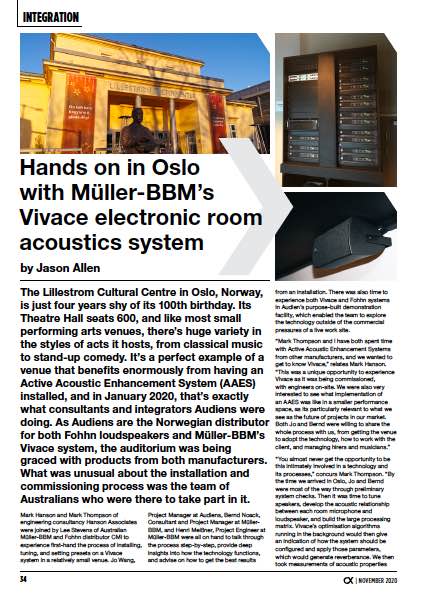
Entertainment technology news and issues for Australia and New Zealand
– in print and free online www.cxnetwork.com.au
© VCS Creative Publishing
Subscribe
Published monthly since 1991, our famous AV industry magazine is free for download or pay for print. Subscribers also receive CX News, our free weekly email with the latest industry news and jobs.

